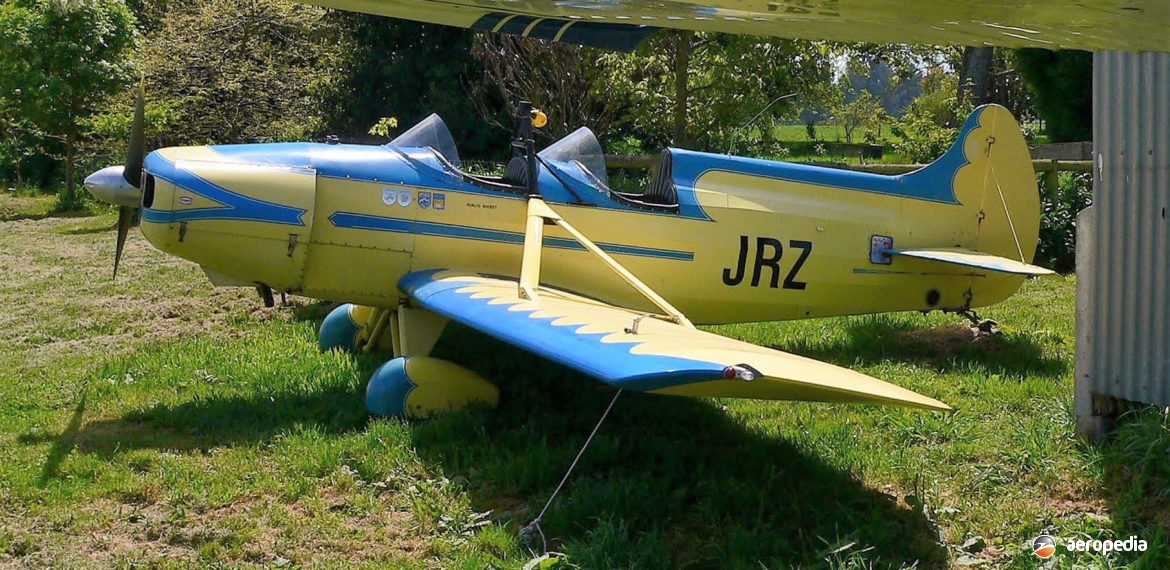Photograph:
Spezio DAL-1 Tuholer ZK-JRZ (c/n 227) at Rangitata, New Zealand in November 2012 (David Paull – NZCIVAIR)
Country of origin:
United States of America
Description:
Two-seat training and touring monoplane
Power Plant:
One 93 kw (125 hp) Lycoming C-125 four-cylinder horizontally-opposed air-cooled engine
Specifications:
- Wingspan: 7.59 m (24 ft 9 in)
- Length: 5.56 m (18 ft 3 in)
- Height: 1.73 m (5 ft 7 in)
- Wing area: 10.40 m² (112 sq ft)
- Max speed: 257 km/h (160 mph)
- Max cruising speed: 206 km/h 128 mph)
- Stalling speed: 72 km/h (45 mph)
- Max rate of climb: 610 m/min (2,000 ft/min)
- Ceiling: 3,658 m (12,000 ft)
- Endurance: 3 hours
- Range: 644 km (400 miles)
- Fuel capacity: 73 litres (17 Imp gals)
- Take-off run: 49 m (160 ft)
- Landing run: 91 m (300 ft)
- Empty weight: 448 kg (987 lb)
- Loaded weight: 715 kg (1,577 lb)
History:
In 1957 Mr Tony Spezio commenced design of a two-seat light sporting aircraft that reminded him of some of the racing aircraft that were seen around the airshow circuit in the United States in the 1930s, particularly the Howard Ike. The prototype, powered by a Lycoming GO-290-G4 engine, was built using parts from a number of retired aircraft, particularly the steel tubing from a Cessna UC-78 and the wheels from an L-2 military glider etc. Construction took place at Bethany in Oklahoma. First flight was made on 2 May 1960.
In 1961 the design won the Mechanics Illustrated magazine ”Golden Hammer Award”; and in 1962 the United States Experimental Aircraft Association held a contest for homebuilt designs in order to interest more people in this field, the Tuholer coming second to the Peter Bowers designed Fly Baby.
The Tuholer was a two-seat, open-cockpit, strut-braced low-wing sporting aircraft with a tailwheel undercarriage. The wings were able to be folded for storage. The fuselage was of welded steel tube with fabric covering, and the wing had a spruce spar with fabric covering. A number have survived and are airworthy in the United States.
In 2003 an example, built in the United States in 1969, was imported to Taieri in New Zealand by Andrew Fairfax where, after restoration in October 2002, it became ZK-JRZ (c/n 227 – ex N7515) on 15 September 2003. It occasionally was flown from Rangitata Island and has been noted at Otaki. Reports indicate a further example has been imported and is stored dismantled at Omaka, Blenheim awaiting restoration.

